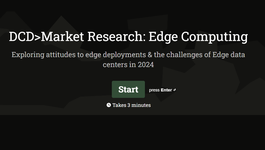As a result of Covid-19, industrial companies are becoming increasingly interested in remote operations and for good reason. With Industry 4.0 and the right level of cybersecurity, remote management allows factory operators to continue to adjust processes, conduct maintenance, and make operational decisions with actionable insights — even when access to the physical plant is restricted.
This also highlights the importance of the industrial edge. There’s been a growing hype around edge computing for some years now, and with the acceleration of digital transformation, I think we’re about to find out why.
What’s the deal with the industrial edge?
The Edge Control layer has traditionally been thought of as the domain of high-speed, real time control. It’s a place where signals are analyzed and decisions are made as fast as possible. The Apps and Analytics layer, on the other hand, is where data is gathered and all the sorting and calculations are done to turn that data into useful business guidance.
Well, what if we combine the real time nature of the Edge Control layer with some of the data analysis capabilities of the Apps and Analytics layer? This approach is part of a broader trend called industrial Edge computing and it’s gaining traction. Today, there’s increasing need for data crunching capabilities at the edge. Applications such as asset management, for example, need to monitor performance and process data in real time to work properly. There’s also a need to present richer insights from business systems data combined with operating data from staff working on the plant floor.
Practically, this means data must be stored and analyzed as close as possible to where it’s produced, creating a need to process large amounts of data quickly. Latency is the enemy — in some control applications we’re talking milli-seconds. A round-trip to a cloud data center and back just won’t cut it!
To address these challenges as we get deeper into Industry 4.0, and especially in the post-Covid era, I get the feeling we’re going to be seeing a lot more of industrial edge computing.
The edge computing trend in practice
For plants in remote locations or harsh environments with limited connectivity, edge computing is even more relevant. These customers need robust, powerful solutions to address complex challenges. Two of Schneider's oil and gas production customers in Southeast Asia and the Middle East with limited connectivity to remote wells have implemented edge computing solutions to help operators get the most value out of their systems.
Both customers shared common objectives:
- To capture expertise from their most senior operators, automate it, and deploy it across more assets
- To actively manage asset lifecycles and maintenance schedules
- To optimize well production by reducing unplanned downtime and maximizing oil volumes
To help these two customers achieve these objectives, we implemented EcoStruxure Autonomous Production Advisor (EAPA), a new solution which will be commercially available later this year. It brings together the power and flexibility of cloud and edge computing with machine learning and artificial intelligence capabilities.
Machine learning models capture expertise from experienced senior operators and subject matter experts. This approach enables the customer to detect, classify, and in some cases, even predict when the asset is going to enter an abnormal operating state — not only from an electrical and mechanical perspective, but also from the production process perspective.
Both customers are reporting very positive results. In one case the customer achieved a 13 percent increase in production while reducing the energy consumption of the oil extraction pump by 34 percent. With the benefits of this solution, the customer expects to extend the lifetime of the well thanks to reduced stresses on the system.
Open, innovative, collaborative solutions
As the industrial digital transformation progresses, we see more and more approaches like edge computing that are based on new ways of using the three levels of Apps and Analytics, Edge Control, and Connected Products. These ‘hybrid’ solutions evolve based on real-world experience and are driven by demand for ever higher levels of profitability and sustainability.
By combining the computing power of the apps layer with the high-speed, real time nature of the edge layer, staff can access the high-quality insights whenever and wherever they need them. This is why we call it innovation at every level!
To learn more about edge computing and how it enables Industry 4.0, watch The Rise of Industrial Edge panel session I recently participated in with colleagues from Schneider Electric, AVEVA, and Stratus Technologies.





